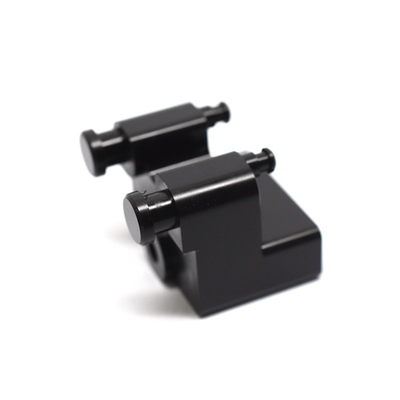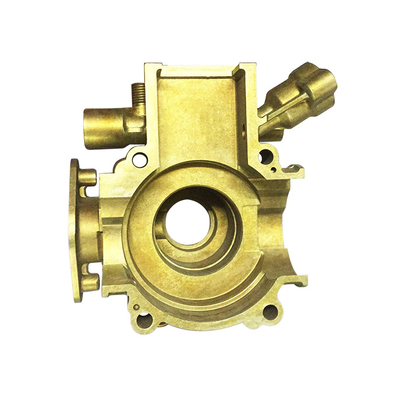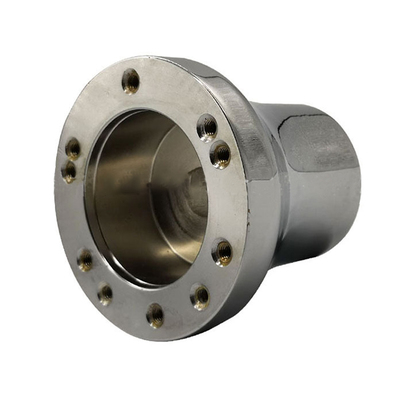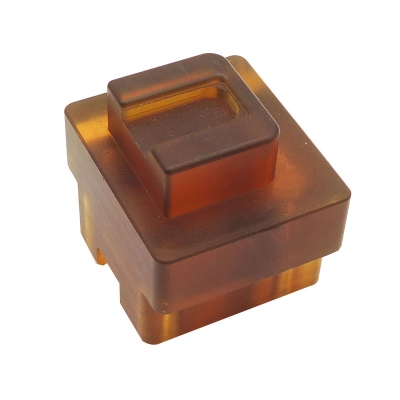The Differences of CNC Machining Titanium and CNC Machining Steel
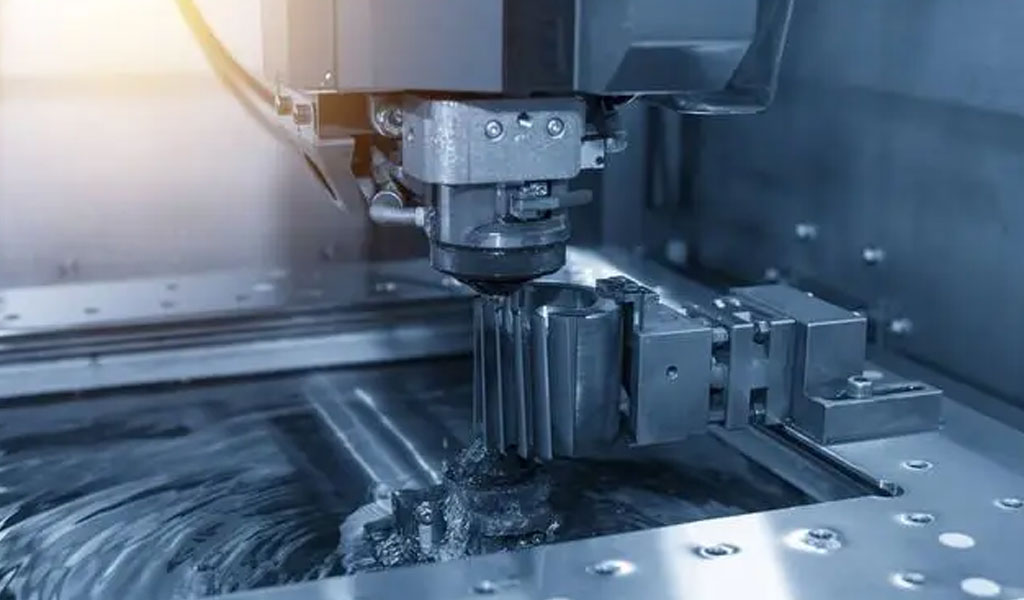
CNC (Computer Numerical Control) machining is a manufacturing process that utilizes computer-controlled machine tools to produce highly precise and complex parts. Two commonly machined metals are titanium and steel, each with distinct properties that significantly affect the machining process. This article delves into the differences between CNC machining titanium and steel, covering aspects such as material properties, tool selection, machining strategies, and applications.
Material Properties
Titanium
Titanium is a lightweight, high-strength metal known for its exceptional corrosion resistance and biocompatibility. It has a density of approximately 4.5 g/cm³, which is about 60% that of steel. Titanium exhibits a high strength-to-weight ratio, making it ideal for aerospace, medical, and marine applications. The metal's high melting point (1,668°C or 3,034°F) and low thermal conductivity pose challenges in machining.
Grades of Titanium
Titanium is available in several grades, each with unique properties:
- Grade 1: Unalloyed titanium, offering excellent corrosion resistance and formability.
- Grade 2: Slightly stronger than Grade 1, also unalloyed with good weldability and corrosion resistance.
- Grade 5 (Ti-6Al-4V): An alloy containing 6% aluminum and 4% vanadium, offering high strength and excellent corrosion resistance.
- Grade 9 (Ti-3Al-2.5V): An alloy with 3% aluminum and 2.5% vanadium, used in applications requiring high strength and good weldability.
Steel
Steel is an alloy of iron and carbon, with the carbon content typically ranging from 0.02% to 2.1% by weight. Steel is known for its high tensile strength, durability, and versatility. It has a density of approximately 7.85 g/cm³. The properties of steel can be altered significantly through heat treatment and alloying with elements such as chromium, nickel, and molybdenum.
Types of Steel
Steel comes in various forms, each tailored for specific applications:
- Carbon Steel: Contains varying amounts of carbon, which affects hardness and strength. Subtypes include low, medium, and high carbon steels.
- Alloy Steel: Contains additional alloying elements such as chromium, nickel, and molybdenum to enhance properties like strength, toughness, and corrosion resistance.
- Stainless Steel: Contains at least 10.5% chromium, offering excellent corrosion resistance. Common grades include 304 and 316.
- Tool Steel: Highly durable and suitable for making cutting and shaping tools. Common types include D2, A2, and O1.
Tool Selection and Wear
Titanium
Machining titanium requires tools that can withstand high temperatures and resist wear. Carbide tools are commonly used due to their hardness and heat resistance. However, the low thermal conductivity of titanium means that heat generated during machining tends to stay near the cutting edge, accelerating tool wear. This necessitates the use of specialized coatings such as titanium aluminum nitride (TiAlN) to improve tool life.
Tool Wear Mechanisms in Titanium Machining
- Adhesive Wear: Titanium tends to stick to the cutting tool, causing material transfer and tool wear.
- Notch Wear: The tendency of titanium to work-harden can cause severe notching at the depth of cut.
- Thermal Cracking: Rapid temperature changes can lead to thermal cracking of the cutting tool.
Steel
Steel machining also benefits from carbide tools, but the range of suitable tool materials is broader due to the varying properties of different steel types. High-speed steel (HSS) and ceramic tools can also be used effectively. The higher thermal conductivity of steel helps dissipate heat more efficiently, reducing the risk of thermal damage to the cutting tool.
Tool Wear Mechanisms in Steel Machining
- Abrasion: Hard inclusions in steel can cause abrasive wear on the cutting tool.
- Diffusion Wear: At high temperatures, chemical reactions between the tool and workpiece material can lead to diffusion wear.
- Oxidation: Elevated temperatures can cause oxidation of the tool material, leading to wear.
Machining Strategies
Titanium
Cutting Speed and Feed Rate
Titanium requires lower cutting speeds and feed rates compared to steel to minimize heat generation and prevent work hardening. Typical cutting speeds range from 30 to 60 meters per minute (m/min), with feed rates adjusted according to the specific titanium grade and desired surface finish.
Coolant and Lubrication
Effective cooling is critical in titanium machining. Flood coolant or high-pressure coolant systems are used to dissipate heat and prevent tool wear. Water-soluble coolants with additives to reduce friction and improve cooling efficiency are commonly employed.
Tool Geometry
Optimized tool geometry is essential for successful titanium machining. Tools with a positive rake angle and sharp cutting edges reduce cutting forces and improve surface finish. The choice of tool geometry also depends on the specific titanium grade being machined.
Steel
Cutting Speed and Feed Rate
Steel can be machined at higher cutting speeds and feed rates compared to titanium, though these parameters vary widely depending on the type of steel. For example, low carbon steel can be machined at speeds up to 150 m/min, while stainless steel requires lower speeds due to its work hardening tendency.
Coolant and Lubrication
Coolant use in steel machining is also important but not as critical as in titanium machining. Flood coolant, mist coolant, or dry machining can be employed depending on the steel type and machining operation. Cutting oils are often used to improve tool life and surface finish.
Tool Geometry
Tool geometry for steel machining varies based on the type of steel and the machining operation. Negative rake angles and tougher tool materials are used for hard steels, while positive rake angles are suitable for softer steels. The tool's edge preparation and coating also play a significant role in optimizing performance.
Machining Operations
Titanium
Turning
Turning titanium involves careful control of cutting parameters to avoid excessive tool wear and thermal damage. Carbide inserts with specialized coatings are used, and interrupted cuts should be minimized to reduce tool chipping.
Milling
Milling titanium requires rigid setups and well-balanced cutting tools to prevent vibrations and chatter. Climb milling is preferred to improve surface finish and reduce cutting forces. High-efficiency milling (HEM) techniques, involving low radial depths of cut and high feed rates, can enhance productivity.
Drilling
Drilling titanium is challenging due to the metal's tendency to work harden and the risk of heat buildup. Carbide drills with coolant-through capabilities are preferred. Peck drilling can be employed to break up chips and improve coolant penetration.
Steel
Turning
Steel turning can be performed at higher speeds and feed rates compared to titanium. The selection of tool material and geometry depends on the steel type and desired surface finish. Interrupted cuts are generally less problematic than with titanium.
Milling
Milling steel also benefits from higher speeds and feed rates. The choice of milling strategy and tool path optimization is crucial for achieving high productivity and surface quality. Climb milling and conventional milling are both viable depending on the specific steel type and machining conditions.
Drilling
Drilling steel is generally straightforward, with a wide range of tool materials and geometries available. The use of coolant or cutting oil can improve tool life and hole quality. For harder steels, carbide drills or cobalt HSS drills are commonly used.
Surface Finish and Tolerances
Titanium
Achieving a good surface finish on titanium requires careful control of cutting parameters and tool condition. Titanium's tendency to gall and its low thermal conductivity can lead to surface defects if not properly managed. Fine feed rates and sharp cutting edges help achieve better surface finishes. Tolerances in titanium machining are typically tighter due to the metal's use in high-precision applications.
Steel
Steel machining generally allows for easier attainment of good surface finishes due to the metal's higher thermal conductivity and lower tendency to gall. The choice of cutting parameters, tool material, and coolant use all influence the final surface finish. Tolerances in steel machining vary widely depending on the application, with tighter tolerances required for critical components.
Applications
Titanium
Titanium's unique properties make it suitable for a wide range of applications:
- Aerospace: Aircraft components, engine parts, and structural elements due to its high strength-to-weight ratio and corrosion resistance.
- Medical: Implants, prosthetics, and surgical instruments owing to its biocompatibility.
- Marine: Offshore structures and ship components because of its excellent corrosion resistance in seawater.
- Automotive: High-performance and racing vehicle components for weight reduction and strength.
Steel
Steel's versatility and range of properties make it a staple material in numerous industries:
- Construction: Structural beams, rebar, and framework for buildings and infrastructure.
- Automotive: Body panels, engine components, and suspension parts due to its strength and formability.
- Manufacturing: Machine parts, tools, and dies for its durability and wear resistance.
- Energy: Pipelines, pressure vessels, and drilling equipment in the oil and gas industry.
Economic Considerations
Titanium
Machining titanium is generally more expensive than steel due to factors such as higher tool wear, lower cutting speeds, and the need for specialized equipment. The cost of titanium raw material is also higher. However, the long-term benefits in specific applications, such as weight savings and corrosion resistance, often justify the higher initial costs.
Steel
Steel machining is typically more cost-effective due to the wider availability of tooling options, higher machining speeds, and lower material costs. The broad range of steel types allows for cost optimization based on the specific requirements of the application. Additionally, the recyclability of steel contributes to its economic advantages.
Environmental Impact
Titanium
The environmental impact of titanium machining includes the energy consumption of the machining process and the disposal of used coolant and worn tools. Titanium's recyclability and long service life in applications contribute to its environmental benefits. However, the extraction and processing of titanium ore are energy-intensive.
Steel
Steel machining also involves energy consumption and waste management considerations. Steel's recyclability is a significant environmental benefit, reducing the need for raw material extraction. The production of steel, especially in electric arc furnaces using scrap metal, has a lower environmental impact compared to primary steelmaking processes.
Conclusion
CNC machining of titanium and steel presents distinct challenges and opportunities due to their differing material properties, tool requirements, and machining strategies. Titanium, with its high strength-to-weight ratio, corrosion resistance, and biocompatibility, is ideal for aerospace, medical, and marine applications. However, its low thermal conductivity and tendency to work harden require careful management of cutting parameters and tool selection.
Steel, known for its versatility, strength, and cost-effectiveness, is widely used in construction, automotive, and manufacturing industries. The broader range of tooling options and higher machining speeds make steel machining more economical, though the choice of steel type and heat treatment significantly influence the machining process.
Understanding these differences is crucial for optimizing CNC machining operations, improving productivity, and achieving the desired quality in finished components. The ongoing advancements in tool materials, coatings, and machining technologies continue to enhance the capabilities of CNC machining for both titanium and steel, driving innovation and efficiency across various industries.
Reprint Statement: If there are no special instructions, all articles on this site are original. Please indicate the source for reprinting:https://www.cncmachiningptj.com/,thanks!
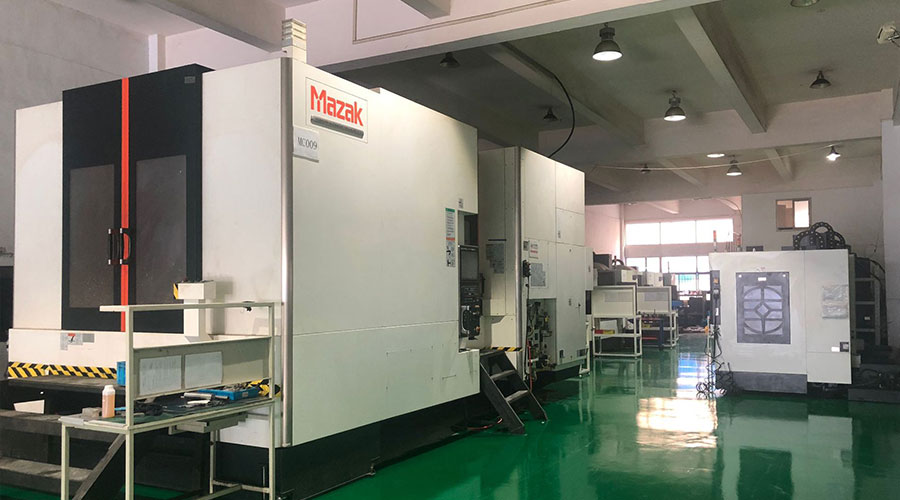 3, 4 and 5-axis precision CNC machining services for aluminum machining, beryllium, carbon steel, magnesium, titanium machining, Inconel, platinum, superalloy, acetal, polycarbonate, fiberglass, graphite and wood. Capable of machining parts up to 98 in. turning dia. and +/-0.001 in. straightness tolerance. Processes include milling, turning, drilling, boring, threading, tapping, forming, knurling, counterboring, countersinking, reaming and laser cutting. Secondary services such as assembly, centerless grinding, heat treating, plating and welding. Prototype and low to high volume production offered with maximum 50,000 units. Suitable for fluid power, pneumatics, hydraulics and valve applications. Serves the aerospace, aircraft, military, medical and defense industries.PTJ will strategize with you to provide the most cost-effective services to help you reach your target,Welcome to Contact us ( sales@pintejin.com ) directly for your new project.
3, 4 and 5-axis precision CNC machining services for aluminum machining, beryllium, carbon steel, magnesium, titanium machining, Inconel, platinum, superalloy, acetal, polycarbonate, fiberglass, graphite and wood. Capable of machining parts up to 98 in. turning dia. and +/-0.001 in. straightness tolerance. Processes include milling, turning, drilling, boring, threading, tapping, forming, knurling, counterboring, countersinking, reaming and laser cutting. Secondary services such as assembly, centerless grinding, heat treating, plating and welding. Prototype and low to high volume production offered with maximum 50,000 units. Suitable for fluid power, pneumatics, hydraulics and valve applications. Serves the aerospace, aircraft, military, medical and defense industries.PTJ will strategize with you to provide the most cost-effective services to help you reach your target,Welcome to Contact us ( sales@pintejin.com ) directly for your new project.
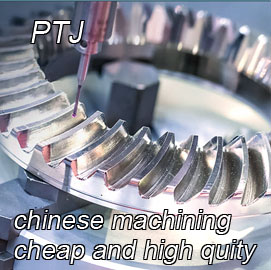
- 5 Axis Machining
- Cnc Milling
- Cnc Turning
- Machining Industries
- Machining Process
- Surface Treatment
- Metal Machining
- Plastic Machining
- Powder Metallurgy Mold
- Die Casting
- Parts Gallery
- Auto Metal Parts
- Machinery Parts
- LED Heatsink
- Building Parts
- Mobile Parts
- Medical Parts
- Electronic Parts
- Tailored Machining
- Bicycle Parts
- Aluminum Machining
- Titanium Machining
- Stainless Steel Machining
- Copper Machining
- Brass Machining
- Super Alloy Machining
- Peek Machining
- UHMW Machining
- Unilate Machining
- PA6 Machining
- PPS Machining
- Teflon Machining
- Inconel Machining
- Tool Steel Machining
- More Material

